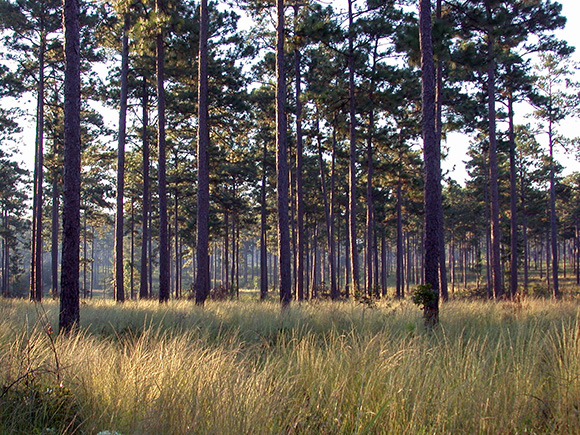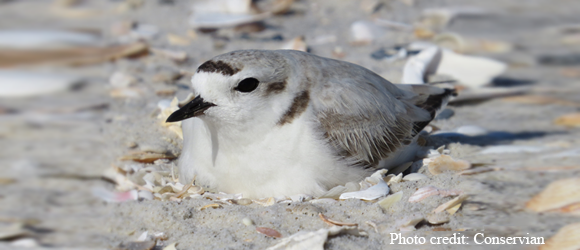Southern Company supports Operation Migration's annual journey for eighth consecutive year
<p>Through its Power of Flight program, Southern Company is partnering with the National Fish and Wildlife Foundation (NFWF) for the eighth consecutive year to sponsor Operation Migration's efforts to reintroduce the endangered whooping crane.</p>
<p>As the presenting sponsor, Southern Company supports Operation Migration's EarlyBird e-bulletin newsletter, which provides progress reports and other information about the migration each morning (sign up here: <a href="http://operationmigration.org/inthefield" target="_blank" adhocenable="false">operationmigration.org/inthefield</a>). The website also features a migration map, live crane cam and other information.</p>
<p>"Operation Migration's long-standing dedication and unique approach to whooping crane recovery continues to inspire followers across the globe," said Southern Company Chief Environmental Officer Dr. Larry S. Monroe. "Southern Company remains committed to the important work Operation Migration is doing every day to protect and foster high-priority and endangered bird populations through the Power of Flight program."</p>
<p>Southern Company's EarlyBird sponsorship supports the annual migration, now in its 15th year, that guides young cranes on a more than 1,200-mile journey from Wisconsin to Florida. The captive-hatched birds are led on the migratory route by ultralight aircraft guided by Operation Migration pilots who act as "surrogate parents." The flight teaches the cranes the migration route so they can return on their own the following spring.</p>
<p>"Southern Company has been instrumental in helping us return the whooping crane to the skies of eastern North America," said CEO and co-founder of Operation Migration Joe Duff. "We're very excited about this upcoming migration - in particular because the group of whooping cranes we have been working with this year is incredibly dedicated to the aircraft. We're hoping if the weather cooperates, it will be a quick journey south."</p>
<p>There are six whooping cranes in this year's flock - five females and one male. Their migration began on Sept. 30 and will conclude at St. Mark's National Wildlife Refuge, south of Tallahassee, Florida. Although the route is mapped with stopovers prior to each migration, weather plays a pivotal role in the duration of the migration.</p>
<p>"The whooping crane ranks as one of the world's most majestic birds, and also one of its most imperiled," said NFWF Executive Director and CEO Jeff Trandahl. "Operation Migration's use of ultralight aircraft to teach young cranes how to migrate serves as an inspiring conservation success story. All of us at the National Fish and Wildlife Foundation are proud to support this program."</p>
<p>Since 2001, Operation Migration has played a lead role in the reintroduction of endangered whooping cranes into eastern North America. During the 1940s, because of hunting and habitat loss, only 15 birds remained, although the species was not declared endangered until 1971. Because of conservation efforts, nearly 500 whooping cranes survive today in wild populations and in captive breeding centers.</p>
<p>Launched in 2003, Southern Company's Power of Flight program strives to restore and revive the populations and habitats of southern birds through habitat restoration and environmental education. The program is the largest public/private funding effort for bird conservation in the south United States.</p>
<p>Southern Company has awarded $3.4 million to 85 Power of Flight projects. Combined with $4 million in partner matching funds and $14.3 million in grantee matching funds, this has resulted in a total investment of over $21.8 million to benefit more than 476,000 acres of southern bird habitat and to protect and restore many iconic bird species such as the whooping crane.</p>
<p>In addition to Operation Migration, which received a continuing grant in 2013, the Power of Flight program also funded seven new grants in 2015, awarded to the following organizations:</p>
<p>Through the Gulf Coast Conservation Grants Program:</p>
<ul>
<li><b>Alabama Wildlife Federation </b>will use capacity building, expanded partnerships, technical assistance and outreach to increase landowner engagement and on-the-ground stewardship implementation on private lands in Alabama Gulf Coast counties to expand habitats for shorebirds, waterbirds and waterfowl, as well as terrestrial birds and wildlife.</li>
<li><b>Conservian</b> will continue to work with partners at sites in Alabama and Mississippi to monitor and restore beach-nesting bird populations and habitats. The project will use standardized monitoring methods and best management practices and will supervise local volunteer site stewards to implement comprehensive shorebird management.</li>
<li><b>Manomet Center for Conservation Sciences</b> will create a Florida shorebird recovery business plan built upon the work of the Atlantic Flyway Shorebird Conservation Business Strategy and the American Oystercatcher Recovery Business Plan. The project will strive to recover four imperiled species in the state: the American oystercatcher, snowy plover, black skimmer and least tern.</li>
<li><b>The Nature Conservancy</b> will support two new conservation corps and a veterans conservation corps pilot demonstration to undertake projects that restore and protect natural resources. The project will improve long-term habitat health for native plants and animals and train young people to participate in the expanding Gulf restoration.</li>
<li><b>State University of New York College of Environmental Science and Forestry </b>will implement experimental vehicle speed reduction measures and provide shelters for snowy plover chicks in order to increase the population of beach-nesting birds on Gulf Islands National Seashore, which is currently limited by poor reproductive success related to predators and mortality from vehicular collisions.</li>
</ul>
<p>Through the Longleaf Stewardship Fund:</p>
<ul>
<li><b>The Alabama Forest Resources Center</b> and partners will continue habitat management benefitting the red-cockaded woodpecker (RCW) on Enon and Sehoy plantations and adjacent properties. Management through this project will help the RCWs maintain 30 or more self-sustaining groups.</li>
<li><b>The Longleaf Alliance</b> and partners will monitor approximately 110 groups of RCWs for breeding activity, band nestlings of successful breeding pairs and translocate approximately 30 subadults from the pool of successful fledglings on the Apalachicola National Forest (ANF) in Florida.</li>
</ul>

